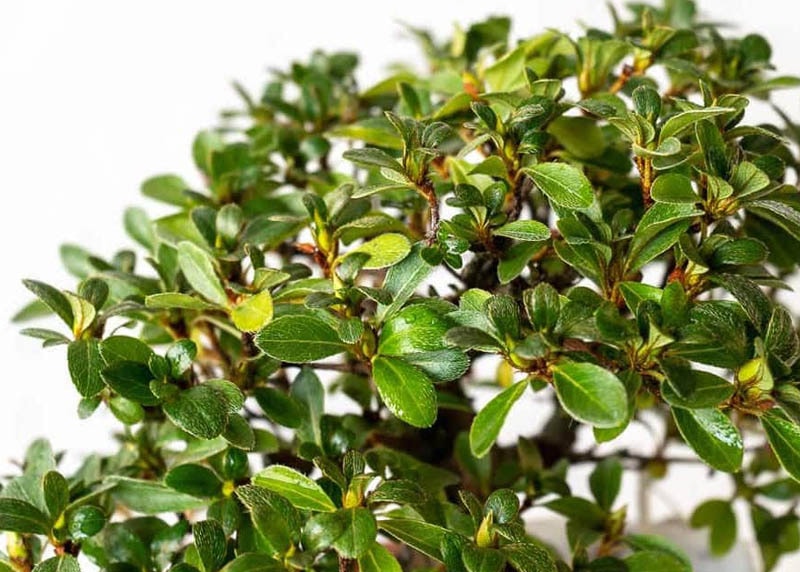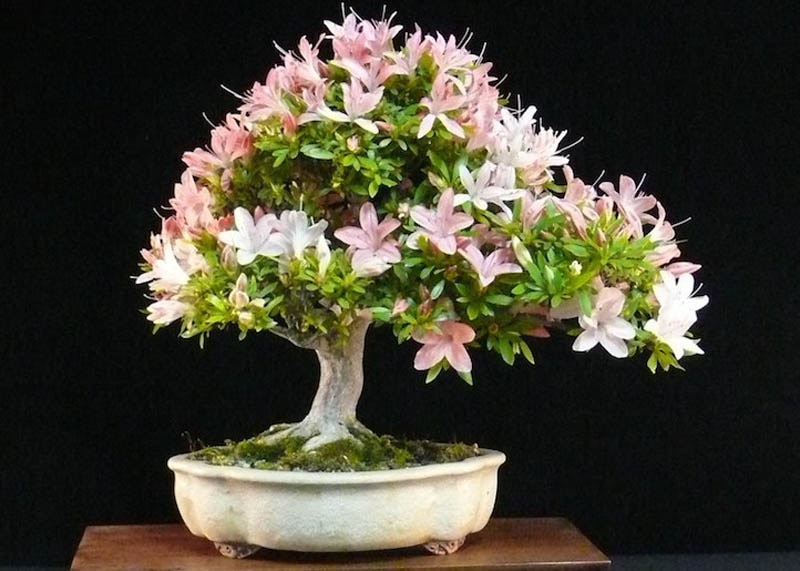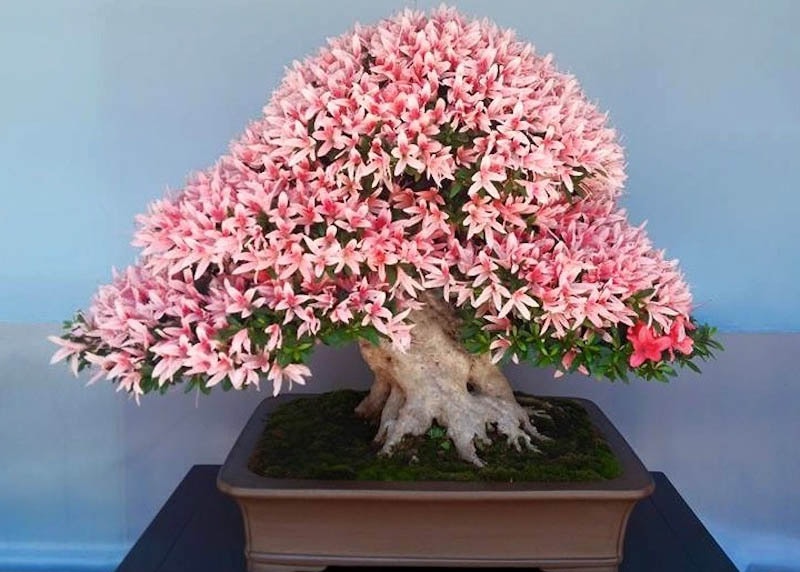Uncover the artwork of caring for Azalea Bonsai trees using this thorough guide.
No matter whether you're a seasoned bonsai enthusiast or maybe a novice, this short article handles all facets of Azalea Bonsai treatment, from placement and watering to fertilizing and repotting.
Learn how to create The perfect ecosystem for the Azalea Bonsai to prosper, like supplying the best level of shade and moisture.
Take a look at strategies including pruning and wiring to condition and manage your bonsai tree, and explore the most beneficial soil and pot choice for Azalea Bonsai. With practical recommendations on propagation, working with pests and disorders, and general information about the Azalea Bonsai tree, this guidebook is your go-to source for cultivating an ideal Azalea Bonsai.
Placement
To ensure the overall health and vitality of your respective azalea bonsai tree, it is vital to take into account its placement. Azaleas prosper in sunny spots, but in the course of the most well liked time in the day in summer, it is best to provide some shade. This will safeguard the tree from excessive heat and forestall the potential risk of sunburn. Also, when your azalea is in bloom, it should be shielded from large rain and direct daylight, as this could cause the bouquets to fade and wilt prematurely. Last of all, for the duration of colder temperatures, it is vital to protect your azalea bonsai from frost and freezing temperatures. It is usually recommended to maintain the tree in a location in which the temperature doesn't fall beneath forty°F (-five°C).
Watering
Right watering is important for that wellbeing and properly-currently being within your azalea bonsai tree. Azaleas never prefer to wholly dry out, but In addition they usually do not tolerate extreme dampness. It's important to routinely Check out the dampness amount of the soil in the bonsai pot. In the event the soil feels dry, it is possible to dunk the basis ball in a bowl of water to be sure complete humidity. Additionally, azaleas favor slightly acidic soil, so applying rainwater or a mix of rainwater and faucet h2o is ideal. If utilizing faucet water, consider filtering it to get rid of any impurities or too much minerals.

Fertilizing
Feeding your azalea bonsai with the appropriate fertilizer is essential for promoting healthy growth and abundant flowering. During the growing season, it is recommended to use a special azalea or rhododendron fertilizer. There are both liquid azalea fertilizers, which can be used weekly, as well as organic products that can be applied less frequently. It is important to reduce feeding during the flowering period to allow the tree to focus its energy on producing beautiful flowers. Adjusting the dosage or frequency of fertilizing during this time is beneficial.
Pruning and Wiring
Proper pruning and wiring techniques are necessary to maintain the desired shape and form of your azalea bonsai tree. Azaleas have a basally-dominant growth pattern, which means that the lower branches grow stronger than the weaker top. This natural growth habit can result in a shrub-like appearance. To counterbalance this, it is advisable to prune the branches harder at the base than at the top, encouraging a more balanced and aesthetically pleasing structure.
After flowering, it is important to remove any wilted flowers and ovaries. This timing is also ideal for other pruning and trimming tasks, as it allows the new flower buds for the next year to develop. Unwanted shoots from the trunk or branches can be removed at any time of the year. However, it is important to note that azalea wood is brittle and prone to breaking, so care must be taken when wiring and bending branches.

Repotting
Repotting is an essential part of bonsai tree care, as it allows for the renewal of soil and the maintenance of root health. Azalea bonsai trees should be repotted every two years, either in spring or after flowering. When repotting, it is important to carefully prune the thin and matted roots to prevent them from becoming tangled or damaged. Using a lime-free soil, such as Pure Kanuma, is recommended for azaleas. This specific soil type provides the appropriate pH balance and nutrient content to support the tree's growth and development.
Propagation
If you wish to propagate your azalea bonsai tree, the most common method is through cuttings. Cuttings can be taken in the spring or summer, depending on the cultivar. The success rate of propagation varies depending on the specific cultivar, but many popular varieties root easily and quickly. To protect young cuttings from excessive evaporation, transparent sheets can be used during the hot months.

Pests and Diseases
Like any plant, azalea bonsai trees can be susceptible to pests and diseases. Spider mites are a common issue, especially in low humidity environments. It is important to address any spider mite infestations promptly by treating them with a suitable pesticide and improving humidity levels. Vine weevils can also be a problem, as they can eat the leaves and their grubs can cause damage to the roots. Special pesticides or nematodes can be used to eliminate vine weevils and their larvae.
To prevent root rot, which is caused by a fungus, it is important to ensure that the soil is not too wet or compacted. Fungicides can be used to treat root rot effectively. Leaf galls can also occur, particularly in cultivars with plain-colored red and purple flowers. To handle this disease, it is best to remove the galls as soon as they are discovered and protect the azalea from excessive rain.
General Information
Azalea bonsai trees are known for their spectacular flowering, which typically occurs in late spring. The flowers come in a variety of colors, shapes, sizes, and patterns, making them a visually stunning addition to any bonsai collection.
To ensure abundant flowering, it is important to time your pruning and fertilizing correctly. Azalea bonsai trees have dark green leaves that vary in size and shape depending on the cultivar. Satsuki and Kurume azaleas are popular choices for bonsai, as they are evergreen and can be kept outdoors. It is worth noting that as azalea bonsai trees age, their branches can become brittle, so it is important to handle them with care.

FAQs
- How big do azalea bonsai trees get? Azalea bonsai trees can vary in size depending on the specific cultivar and how they are cared for. On average, they range from around 6 inches to 18 inches in height.
- Is an azalea bonsai an indoor plant? Even though azalea bonsai trees may be saved indoors temporarily for Exhibit functions, they generally prefer to be stored outdoor in which they can obtain good sunlight and airflow.
- How much time do azalea bonsai trees Are living? With proper treatment, azalea bonsai trees can Dwell for many years. Some azaleas are identified to live for many years when offered the right ailments and care.
- Wherever ought to I position my azalea bonsai? Azalea bonsai trees prosper in sunny places with a few shade in the course of the hottest Component of the day. They must also be protected from large rain and extreme temperatures.
- Just how long does azalea bonsai previous? The lifespan of the azalea bonsai tree may vary based upon different things such as care, atmosphere, and genetics. With suitable care, they can Dwell for quite some time and provide enjoyment through their lifespan.
- Do azaleas make good bonsai? Of course, azaleas make superb bonsai trees. Their lively flowers, dark inexperienced foliage, and organic development patterns make them a visually putting choice for bonsai enthusiasts.
- Can azalea bonsai improve indoors? Whilst azalea bonsai trees is often saved indoors temporarily, they often choose to be retained outdoor wherever they might obtain the appropriate daylight, airflow, and humidity levels.
- How long do azalea bonsai Dwell? The lifespan of the azalea bonsai tree will vary according to a range of elements. With right care, they could Dwell for a few years and provide enjoyment through their lifespan.
- How does one care for an azalea bonsai plant? Caring for an azalea bonsai plant will involve offering the appropriate daylight, watering, fertilizing, pruning, and protection from pests and conditions. Pursuing the precise treatment guidelines outlined in this article will assistance make sure the health and vitality of one's azalea bonsai tree.
Types and Tactics
Azalea bonsai trees might be styled and formed working with several different procedures and styles. Some popular variations and procedures for website azalea bonsai include:
- Cascade: This type consists of the tree cascading down from its container, developing a graceful and flowing appearance.
- Pruning: Pruning is essential for sustaining the desired shape and method of the azalea bonsai tree. It helps market healthier progress and also a balanced construction.
- Shohin: Shohin is often a variety of bonsai that refers to smaller-sized trees. Azaleas is usually trained in this design, developing a compact and sensitive physical appearance.
- Rhododendron: Azaleas belong on the rhododendron genus, and their organic development designs can be accentuated and Improved in bonsai type.
- Indoor: When azalea bonsai trees are typically held outdoors, they can be quickly exhibited indoors for short intervals. On the other hand, it can be crucial to deliver them with the appropriate lighting and treatment during this time.
- Flowering: Azaleas are renowned for his or her attractive and lively flowers. Styling tactics can assist showcase and increase the tree's flowering capabilities.
- Purple: Azaleas appear in many different colours, which include shades of purple. These distinctive colours might be highlighted and emphasised in styling endeavours.
- Aged: The appearance of the aged and mature tree might be reached by means of styling methods for instance making use of aged-wanting containers, creating a weathered and majestic visual appearance.
- Japonica: The japonica assortment of azaleas is a well-liked option for bonsai because of its normal growth habits, modest sizing, and delightful flowers.
- Root in excess of rock: This method requires teaching the tree's roots to develop over a rock or other framework, creating an interesting and visually pleasing Screen.
- Nursery stock: Azalea bonsai trees is usually commenced from nursery stock, which happens to be readily available and can be shaped and qualified to build one of a kind and exciting patterns.
- Pink: Pink-flowering azaleas can add a gentle and feminine contact towards your bonsai selection. Styling strategies can enhance and emphasize these fragile shades.
- Tree: The tree design is really a common and timeless choice for bonsai. Azaleas could be educated and styled to resemble miniature variations of complete-sized trees, developing a visually hanging Display screen.
- Australia: In Australia, azaleas are common options for bonsai because of their adaptability to various climates as well as their capacity to prosper in outdoor configurations.
- Clump: Clump-type azalea bonsai trees feature a number of trunks expanding carefully together, making a dense and visually attractive composition.
- Windswept: The windswept model mimics the effects of wind and weather conditions with a tree, creating a unique and dynamic overall look.
- Small: Azaleas are Obviously compact and tiny in sizing, creating them a really perfect choice for tiny-sized bonsai trees.
- Out of doors: Azalea bonsai trees are typically held outdoor, wherever they can get the right sunlight, airflow, and temperature fluctuations needed for their expansion and improvement.
- Saotome: The saotome type will involve creating a solitary, elongated trunk with branches that step by step taper off, creating a sense of movement and stability.
- Kurume: Kurume azaleas are a range of azalea that originated in Japan. They are really well-liked possibilities for bonsai because of their little dimensions and vivid flowers.
- Yellow: Yellow-flowering azaleas can include a vivid and cheerful contact for your bonsai selection. Styling approaches can increase and emphasize these vibrant colors.
- Forest: The forest type consists of creating a grouping of trees, with Every specific tree serving for a component of a larger composition. Azaleas can be utilized to build visually breathtaking forest-fashion bonsai displays.
- Semi-cascade: Semi-cascade bonsai trees attribute a trunk that cascades partly above the sting from the container, making a dynamic and visually appealing arrangement.
- Trunk: The trunk of an azalea bonsai tree is usually a very important focal point. Styling techniques can accentuate and emphasize the exclusive attributes and options of your trunk.
- Large: Although azalea bonsai trees are In a natural way modest and compact, they are often trained and styled to build the looks of a bigger and even more mature tree.
- Proflowers: Proflowers is really a nicely-recognized on line retailer that provides a variety of bonsai trees, including azaleas. They offer a hassle-free choice for acquiring and incorporating azalea bonsai trees towards your assortment.
- Mame: Mame is usually a style of bonsai that refers to pretty tiny trees. Azaleas might be experienced During this style, developing a miniature and fragile overall look.
- Plant: Azalea bonsai trees reside crops that call for treatment and a spotlight to prosper. By giving the right situations and adhering to suitable treatment tips, you'll be able to enjoy the attractiveness and magnificence of these spectacular trees.
From the a variety of designs and tactics readily available, you could create a unique and individualized azalea bonsai tree that reflects your own private creative vision and aesthetic Tastes. Experimenting with various types and tactics might be a rewarding and inventive journey on this planet of bonsai cultivation.
